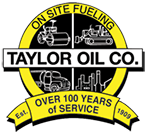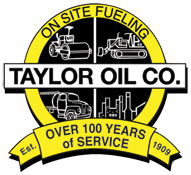Winter is Around the Corner: Prepare the Fleet – Frigid temperatures and harsh winter conditions can be very unforgiving on fleet vehicles that must operate up to 12 hours a day. But by engaging in routine maintenance, you as a fleet manager can avoid emergency repairs and expensive downtime during the coldest months of the year.
Before the snow falls and temperatures dip, take these steps to prepare your vehicles for the season:
Utilize winterized fuel: The two most common cold-weather complaints among fleet owners? A decrease in fuel economy and vehicles that don’t start up when temperatures go below zero. Seasonally-enhanced fuels can help you stay productive even in negative 30° Fahrenheit temps, with a cold filter plugging point (CFPP) of negative 55° Fahrenheit. By adding additives, you can also boost your horsepower and fuel economy by five percent.
Drain the water separator and replace filters: Water in your fuel system is never good, as it can damage fuel pumps and injectors in below-zero temperatures. As a result, this can lead to cold engine startup issues that many people assume is “fuel gelling.” However, what’s probably happening is that water is turning to ice within the fuel storage tanks and filtration systems, plugging up your filters. The replacement of water-absorbing filters and regular draining of the water separator will prevent this.
Keep up with preventive maintenance: Cold weather can damage wearable components. Make sure this doesn’t happen by replacing worn belts, hoses and brake pads that will save you from spending money on expensive repairs later. Test the battery often and clean all connections. Inspect the glow plugs on diesel models.
Check fluids: Using the wrong oil in the winter can lead to engine wear. Heavier oils are too viscous to lubricate well at low temperatures. To simplify cold cranking and startup, use a full-synthetic oil with a lower cold temperature viscosity that operates better over a wide range of temperatures. Check and top off your coolant, power steering, brake and windshield washer fluids regularly.
Clean and inspect the exterior: Protecting the exterior of vehicles from snow, ice and salt starts with a thorough cleaning and a coat of wax before winter hits. Wash down the cab, body and undercarriage to get rid of corrosive salts and deicers that won’t result in body damage.
Inspect the interior: Keeping your fleet drivers safe, warm and comfortable in the cab is also very important. Check the heater and defroster, equipping every vehicle with an emergency kit complete with water, road flares, a fire extinguisher, solar blanket, reflective triangles and jumper cables.
Winter can certainly pose a challenge for fleet managers and drivers, but there are a few things you can do to prepare for cold weather so you can keep your fleet vehicles running seamlessly throughout the season. Schedule your oil deliveries with Taylor Oil now to avoid downtime later.


